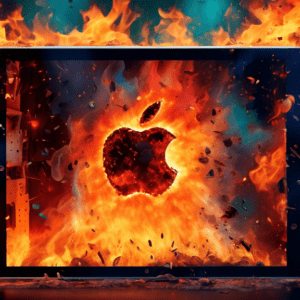Apple has recently found itself at the center of controversy regarding the actual performance capabilities of its latest iPad Air. While the company initially boasted about the device’s impressive processing power, a discrepancy in the advertised specifications, particularly concerning the GPU, has left some users questioning the validity of Apple’s claims. This article delves into the details of the situation, examining the performance claims, the technical error, and Apple’s response.
Unveiling the iPad Air’s Performance Prowess
Launched amidst much fanfare, the latest iteration of the iPad Air promised a significant leap in performance, positioning itself as a worthy competitor to even some laptops. Central to this claim was the inclusion of Apple’s M1 chip, a powerhouse known for its efficiency and speed, previously featured in the iPad Pro lineup. Apple confidently declared that the new iPad Air would deliver up to 60% faster performance than its predecessor, thanks to the M1 chip’s 8-core CPU and, importantly, a purported 9-core GPU.
The 9-Core GPU Discrepancy
The excitement surrounding the iPad Air’s performance potential hit a snag when technical reviews and user investigations revealed a discrepancy in the GPU specifications. While Apple had advertised a 9-core GPU across all models of the new iPad Air, it became apparent that certain configurations, specifically those with the base 64GB storage option, were equipped with an 8-core GPU instead.
This discrepancy, while seemingly minor, carries significant implications. The number of GPU cores directly influences a device’s graphics processing capabilities, which in turn affects its performance in graphically demanding tasks such as gaming, video editing, and augmented reality applications. The missing GPU core in the base model iPad Air suggested a potential difference in performance compared to the higher storage variants, contradicting Apple’s initial claims of uniform performance across the entire iPad Air lineup.
Apple’s Response and Performance Clarification
Facing mounting inquiries and potential backlash from users who felt misled by the discrepancy, Apple issued a statement acknowledging the error in their marketing materials. The company clarified that while all new iPad Air models are indeed powered by the M1 chip, a limited number of configurations were shipped with an 8-core GPU instead of the advertised 9-core variant. However, Apple maintains that this discrepancy has a negligible impact on the overall performance of the device.
To substantiate their claim, Apple emphasizes that the M1 chip’s architecture, even with an 8-core GPU, still delivers a significant performance boost compared to the previous iPad Air generation. The company argues that the M1’s unified memory architecture and advanced image signal processor contribute significantly to the overall graphics performance, compensating for the missing GPU core in the base model.
Furthermore, Apple points out that the performance difference between the 8-core and 9-core GPU configurations is minimal in real-world usage scenarios. The company asserts that most users wouldn’t notice a significant difference in performance during everyday tasks, including web browsing, streaming, and light gaming. The impact of the missing core, Apple argues, would primarily be noticeable only in extremely demanding tasks that push the GPU to its limits.
Addressing User Concerns and Moving Forward
Despite Apple’s clarifications and assurances, the initial discrepancy in GPU specifications has undoubtedly left some users feeling disappointed and skeptical. The company’s response, while addressing the error, raises questions about transparency and the potential impact, however minimal, on the user experience, particularly for those who opted for the base model iPad Air.
To mitigate concerns and regain user trust, Apple could consider offering a goodwill gesture to those affected by the GPU discrepancy. This could take the form of a partial refund, extended warranty, or credit towards future Apple purchases. Such a gesture would demonstrate Apple’s commitment to customer satisfaction and acknowledge the inconvenience caused by the initial miscommunication.
The Bigger Picture: Performance Claims in the Tech Industry
The iPad Air GPU situation highlights a broader issue within the tech industry: the tendency to emphasize raw specifications as the sole indicator of a device’s performance. While specifications like CPU cores and GPU count provide a general idea of a device’s capabilities, they don’t always paint a complete picture of real-world performance, which is influenced by a multitude of factors including software optimization, thermal management, and overall system design.
As technology advances and device components become increasingly integrated, it’s essential for consumers to look beyond marketing jargon and focus on real-world performance benchmarks and reviews from trusted sources. These provide a more accurate representation of a device’s capabilities and how it performs in everyday scenarios.
Conclusion
The controversy surrounding the iPad Air’s GPU configuration serves as a reminder that even tech giants like Apple aren’t immune to errors and miscommunications. While the actual performance impact of the missing GPU core in the base model iPad Air might be minimal, the situation underscores the importance of transparency and accurate information in product marketing. Moving forward, consumers should remain discerning and rely on a combination of specifications, benchmarks, and user experiences to make informed purchasing decisions.
